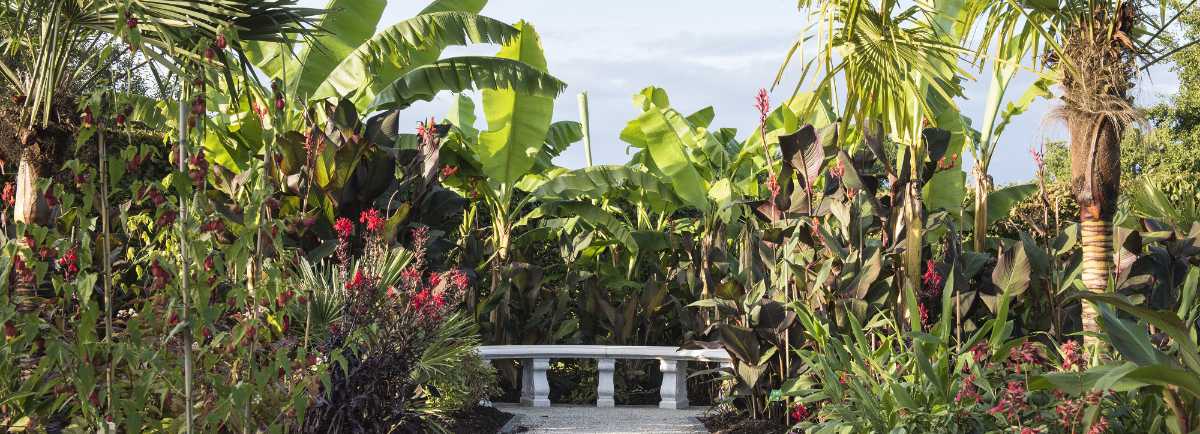Fancy a taste of the tropics at home? Walk around the exotic garden at RHS Garden Wisley, the horticultural charity’s flagship site, and you’ll be transported to faraway places amid great, leafy banana plants, pint-sized pineapples, zingy yellow and orange cannas, lush-leaved ginger and wafting palms.
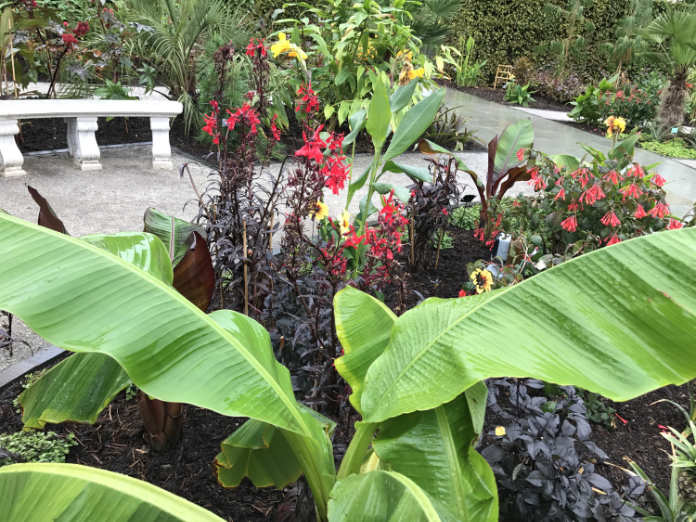
You might think that the British climate won’t easily accommodate such exotics, but only 30% of the planting is not hardy, explains Wisley’s curator Matthew Pottage.
“We wanted a good range of hardy palms, some of which were UK-grown. But some originate from Mexico, China and the Mediterranean.
“I also wanted some exotic-looking conifers which didn’t say ‘typical conifers’, so we have some long leaf pines, the Mexican pines, Pinus montezumae, with the big needles and other large leaf evergreens like eriobotrya.”
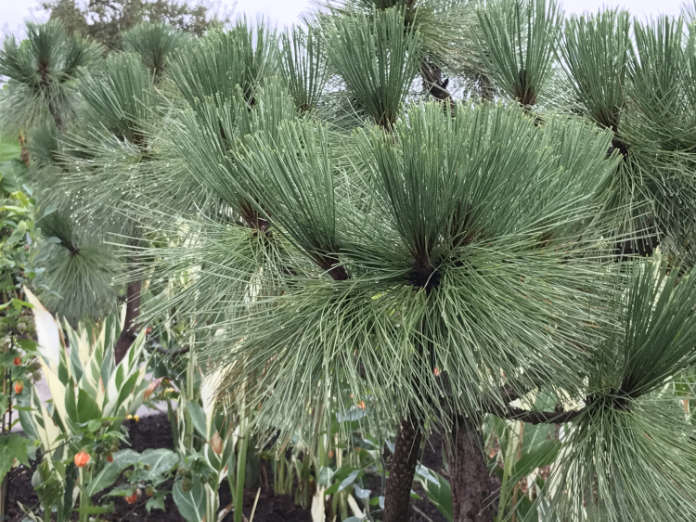
Some of the less hardy specimens such as cannas, dahlias and abutilons will be mulched over to protect them in the winter.

How to create an exotic garden
But how can you create an exotic space in your own garden?
Find a sunny, sheltered spot
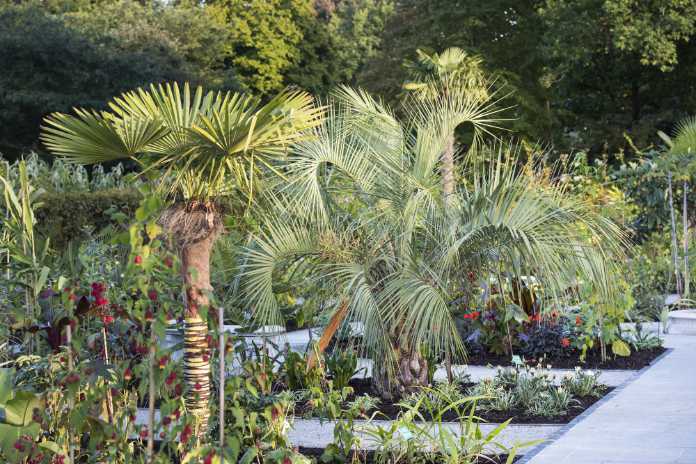
Tropical-looking plants such as cannas and palms often thrive when they are baked and if you have sandy soil, they are less likely to become waterlogged in winter. Palms love the heat – put them up against a south-facing or west-facing wall, where you have hard landscaping, which will help hold heat. Make sure your soil is free-draining because exotics don’t like to be waterlogged. Feed palms regularly.
Create an evergreen hardy backbone
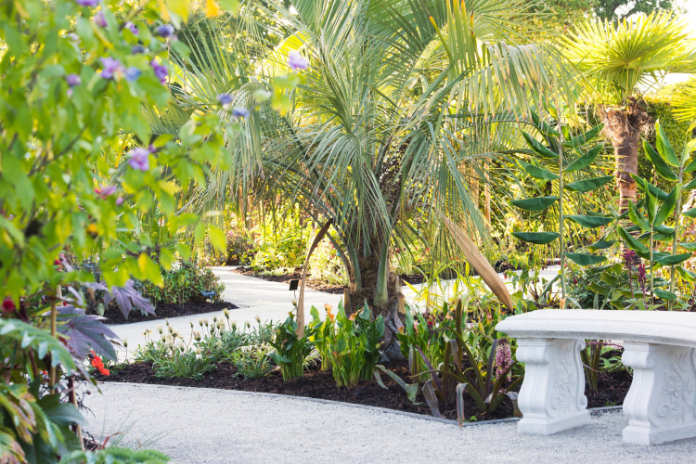
Use unusual conifers placed behind flower power and herbaceous layers comprising cannas, ginger and other colourful plants. If you leave them in the ground, you will need to cut them right back and then mulch over them.
Take inspiration from hardy things like the eriobotryas and variegated fatsias. But if you grow banana plants they will need wrapping. And save up for the biggest palm you can afford. The more mature the palm is, the hardier it will be. Young seedlings may have a hard time getting through the first few winters.
Make the most of dahlias
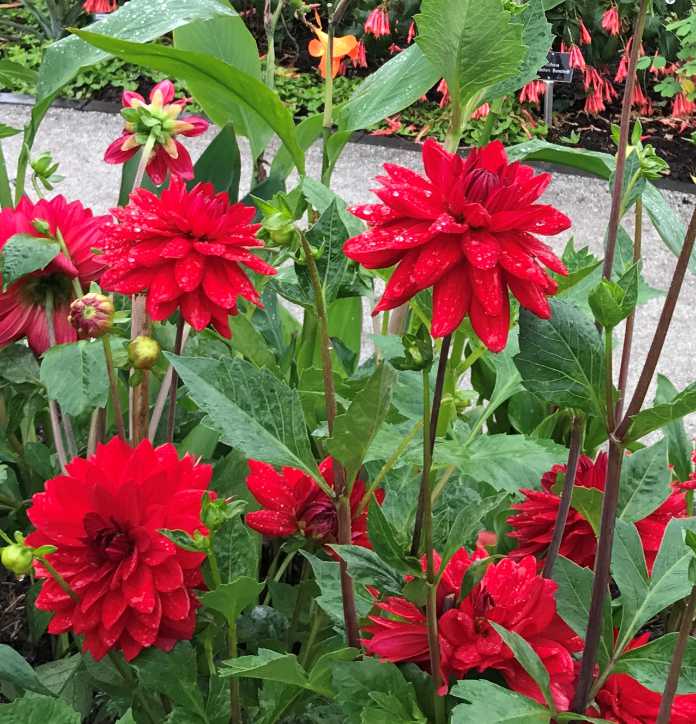
The exotic garden incorporates a host of red, yellow and deep orange dahlias, including the striking red D. ‘Edwin’s Sunset’ and the deep orange ‘Bishop of Oxford’ and the deep red ‘Karma Choc’.
Consider unsung heroes
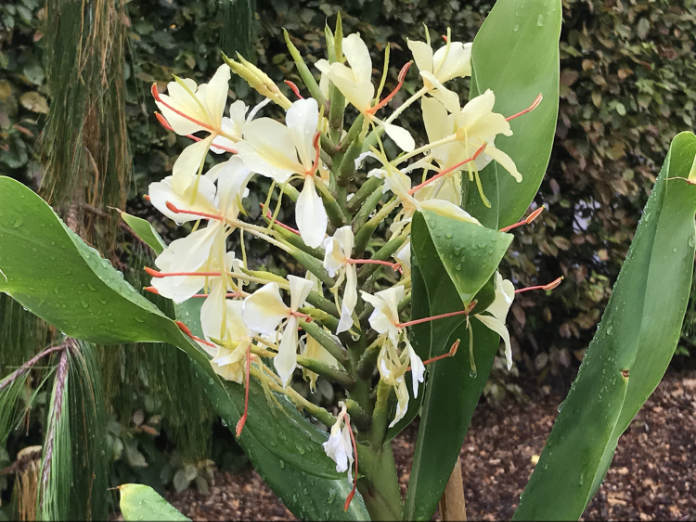
“The unsung heroes include gingers, which will be OK in a bit of shade or in full sun and they flower too. They are a lot tougher than people think and are quite underused plants,” Matthew explains. “They typically flower later in the season. They have this exotic foliage through summer and flowers can go right through to the autumn depending on how the summer’s been. The frost will take them back and they need to be mulched over in the winter.
“We also want to expand the eucomis collection, have more echinaceas and zantedeschias, which have survived over winter in other parts of the garden.”
Mix in things you might see in other plantings, such as persicaria. Hardy hibiscus can sit easily with arundo and abutilons. Deep red hardy Lobelia tupa and ‘Queen Victoria’, also have an exotic look. Bromeliads, which are related to pineapples, are also hardy. Eucomis make great bed edges.
Look after non-hardy exotics
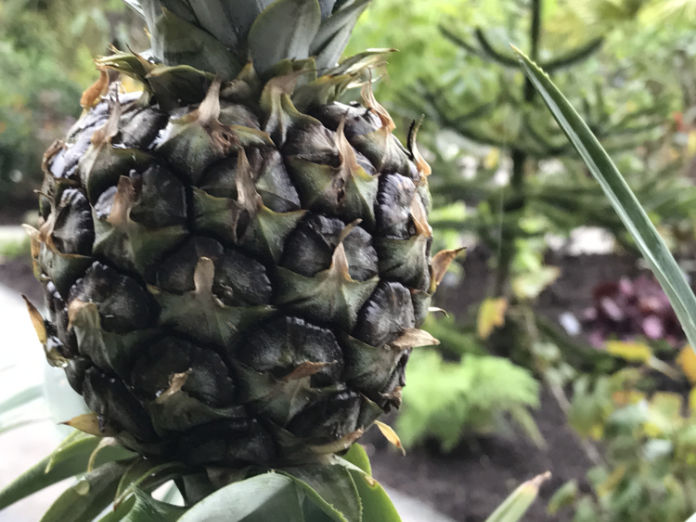
Pineapples will need to come in, says Emma Allen, Wisley’s garden manager. “Overwinter them and take them out again next year. The idea is to make the area much more diverse, with plants which look exotic, but are much more hardy, such as Echinacea ‘Hot papaya’, which has a funky, hot-looking flower. We also have dark orange Rudbeckia ‘Summerina Orange’, which have an exotic look but will survive.”
Some exotic-looking plants will grow in shade
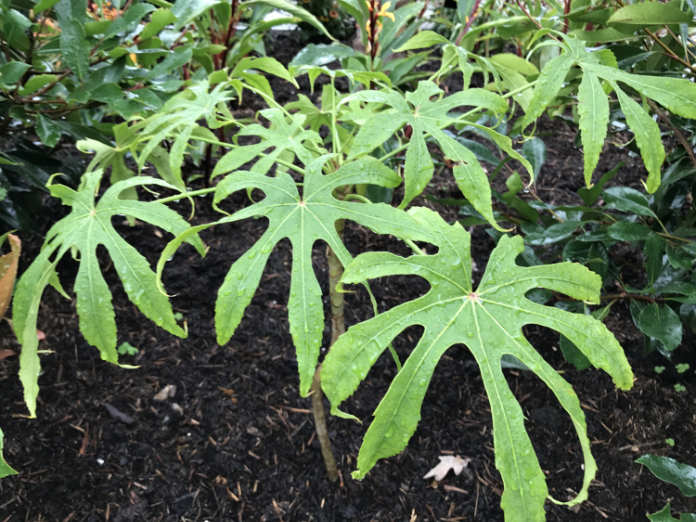
Broad-leaved fatsias, huge-flowered magnolias and ferns with wispy fronds can be placed to create an exotic look, mixed with colour from zantedeschia and hardy begonias with huge veined deep pink leaves.
Use small plants in limited spaces

“I’m a massive fan of Trachycarpus wagnerianus which is really hardy but the leaves stay small,” says Matthew. “Sometimes you need an exotic-looking leaf shape to set the tone, then work from that, using maybe one thing for its foliage like the begonias, something for its flower power like cautleya, depending on the situation.”
Read more: How to create a tropical garden to feel like you’re on holiday.























































